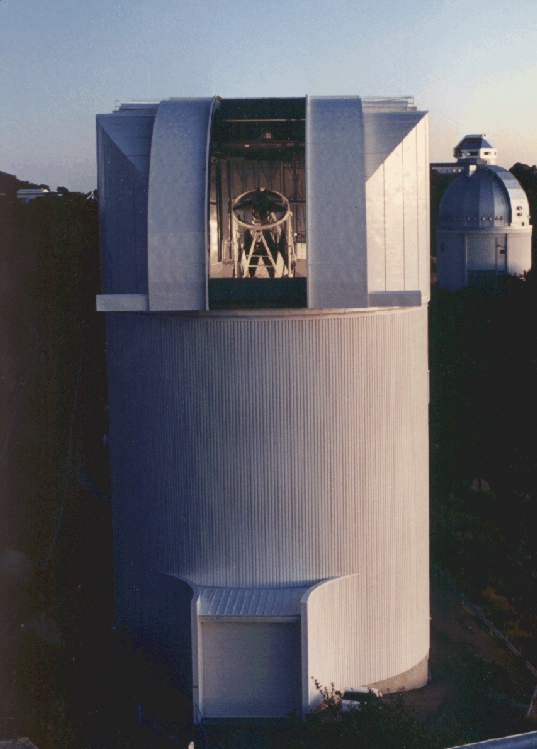


![]()
![]()
![]()
The launch of the
Fermi Gamma-ray Space Telescope on
June 11, 2008 began a
new era in the study of high-energy emission from active galactic nuclei
(AGNs).
For the first time, a sizable number of AGNs can be monitored
with unprecedented time resolution over
a tremendous range in gamma-ray energies.
The Large Area Telescope (LAT) aboard Fermi essentially views the entire
sky every 3 hours in the energy range of 30 MeV -- 300 GeV.
This allows for uniform and long-term monitoring of blazars,
which are AGNs that were found to dominate the gamma-ray
sky by the Compton Gamma Ray Observatory,
the forerunner to Fermi.
Since blazars are highly variable on very short time scales (days or shorter)
at all accessible wavelengths, it is important that supporting observations
be obtained for these AGNs
across the electromagnetic spectrum throughout the Fermi mission.
Such observations will place the observed
gamma-ray behavior of these extreme objects in context with the
variability of the continuum at lower energies.
Only through this multi-wavelength approach can
a comprehensive understanding of the source structure and nonthermal
emission mechanisms in blazars emerge.
To help realize this goal,
Steward Observatory
of the University of Arizona
contributed optical data for the LAT-monitored
blazars and Fermi Targets of Opportunity (ToOs) during the first decade of
its mission as part of the
Guest Investigator Program.
As it has since the launch of Fermi,
the primary contribution of the Steward Observatory program
was monitoring the optical linear polarization
of the blazar sample.
These types of observations are particularly important for these AGNs
because polarization provides the only direct
information about the magnetic field within the region producing the
optical synchrotron emission.
The observations yield measures of both the degree of ordering
and the orientation (projected onto the sky) of the magnetic field at
the highest frequencies currently possible since there are no
space-based capabilities to measure polarization at gamma-ray, X-ray,
or ultraviolet wavelengths.
As a bonus, the spectropolarimetry of the objects also yield
measurements of the brightness and spectral index of the
optical synchrotron light.
An attempt was made to observe as many accessible gamma-ray-bright blazars
at least once per night during the
time allocated
for this project on Steward Observatory telescopes.
In addition, suitable ToOs that were brought to our attention by the Fermi project and others
were also be observed.
The program provides data to study possible connections
between the gamma-ray flux and variability and the optical behavior observed.
Correlations detected between these two spectral regions
provide important information and constraints on models for the high-energy
gamma-ray emission from the relativistic jets of these AGNs.
This project was funded through Fermi Guest Investigator Program grants
NNX08AW56G, NNX09AU10G, NNX12AO93G, and NNX15AU81G. Please see here for properly crediting this
program if measurements in the public Fermi/Steward Observatory blazar data archive
are used for your research.
Observations were made using these Steward Observatory facilities:
Weather Information: See if there is
any chance of a successful observation of your favorite blazar/ToO on the
night that you are interested in.
Statement on data use and acknowledgment.
Fully reduced optical polarimetry,
photometry, and
spectra are available.
Data are sorted by both date and
object. They include:
There are explanatory README files for polarization, photometric, and
spectroscopic data (also see arXiv:0912.3621).
Overview of the Optical Observational Program
![]()
Personnel and Contact Information
pssmith@arizona.edu
(520) 621-2779
buelljannuzi@arizona.edu
![]()
Telescopes and Instrumentation

All observations were obtained using the
SPOL CCD Imaging/Spectropolarimeter.
![]()
Optical Observing Campaigns
![]()
Object Lists
![]()
DATA
![]()
 Back to the
top of this page.
Back to the
top of this page.
![]()
Please contact Paul Smith (pssmith@arizona.edu) if you have questions concerning these web pages.